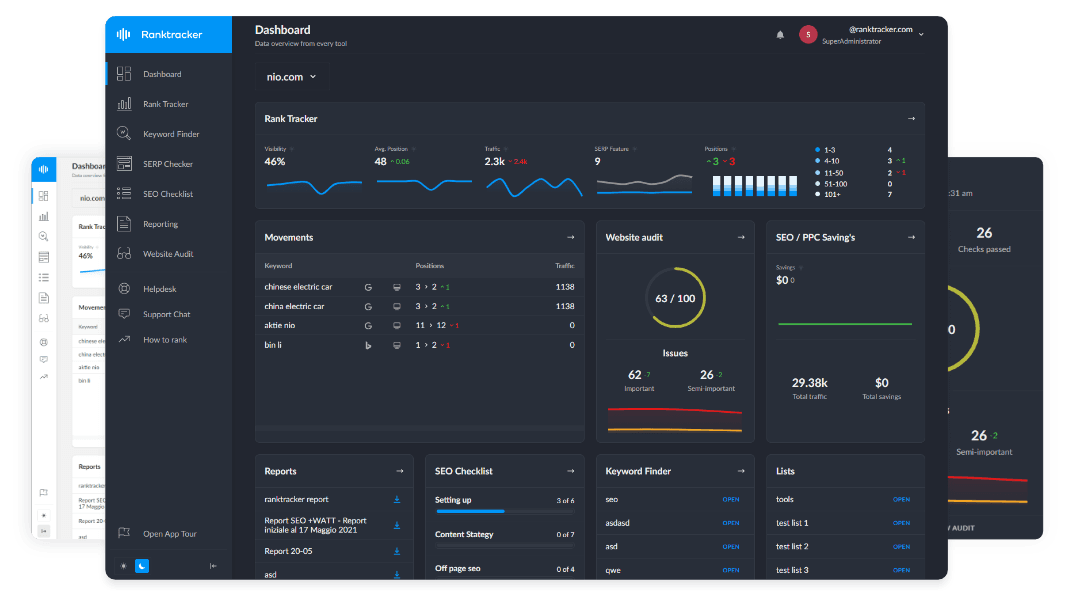Intro
Cyberattacks are targeting small and medium businesses (SMBs) more than ever. Many business owners believe hackers only go after big companies, but that’s far from the truth. SMBs often have weaker defenses, making them easy targets for criminals seeking valuable data or money.
Did you know that 43% of cyberattacks target small businesses? Yet, many owners still lack a solid cybersecurity plan. This post will provide you with trusted strategies to protect your business against these growing threats. These tips are straightforward, and practical, and could save your company from disaster. Prepared to protect your business? Keep reading!
Assess Your Current Cybersecurity Risks
Identify vulnerabilities in your systems with a detailed review. Many data breaches—85% to be exact—stem from human errors, according to a 2021 Verizon report. Weak passwords, untrained employees, and outdated software act as open doors for cybercriminals. Explore all possible exposures by examining past incidents or failed security responses.
Regular vulnerability scans help pinpoint weaknesses before attackers do. For example, an SMB owner might discover unpatched software that hackers could exploit through ransomware attacks. As the risks keep evolving, staying one step ahead is critical. You can't fix what you don't acknowledge.
Train Employees on Cybersecurity Best Practices
Employees are often the first line of defense against cyber threats. Proper training can prevent costly mistakes and protect your business from breaches.
- Teach employees the importance of cybersecurity basics. Share security principles like creating strong passwords, recognizing threats, and securing sensitive data.
- Help staff identify phishing attempts early. Show examples of fake emails and messages designed to steal credentials or financial information.
- Stress handling sensitive information responsibly. Explain why mishandling data can lead to breaches or legal problems.
- Highlight real-world consequences of human error in attacks. Mention how 85% of breaches involve mistakes made by employees (Verizon, 2021).
- Offer frequent refreshers on security practices. Cyber risks change fast, so regular updates keep everyone prepared.
- Provide practice exercises for common scenarios like email scams or suspicious attachments. Interactive learning enhances understanding better than lectures.
- Clearly outline policies about device use at work and home networks. Personal gadgets may put company data at risk without proper precautions.
- Assign a leader for cybersecurity awareness in the team to encourage accountability and reminders within the workplace. To learn how trusted IT partners can support employee education and network protection, read more about Alexant Systems.
- Recognize employees who follow guidelines well during assessments or notice unusual behavior online successfully to encourage others.
- Invest in cybersecurity training platforms designed for small teams to save time while keeping lessons effective without overwhelming resources.
Implement Strong Password Policies
Set password requirements that demand a mix of uppercase letters, lowercase letters, symbols, and numbers. Require at least 12 characters for extra strength. Ban common passwords like "123456" or "password." Use timers to enforce regular password updates every 60-90 days.
Limit sensitive data access by securing systems with strict controls. Block unauthorized logins after failed attempts through lockout settings. Separate payment processing tools from devices used for general internet browsing. Add guidelines for handling sensitive data to avoid breaches caused by weak credentials.
Need practical tools to enforce secure password policies? Implementing a secure password policy is crucial, but many employees struggle to create unbreakable credentials. Using an online secure password generator not only simplifies the process but also helps prevent the use of weak or easily guessable passwords. Tools like the Bitdefender Strong Password Generator instantly provide complex, random options that meet all best practices for SMB security and can support your team’s cybersecurity with minimal effort.
Use Multi-Factor Authentication (MFA)
Adding Multi-Factor Authentication (MFA) enhances account security. It requires users to verify their identity through multiple methods, like a password and a code sent to their phone. This additional layer protects against unauthorized access even if passwords are leaked or guessed.
Microsoft reports MFA prevents 99.9% of account compromise attacks. Many banks, email platforms, and cloud services use it for secure login processes. "Passwords alone aren’t enough; consider MFA as your digital protector.".
Regularly Update and Patch Software
Outdated software is like leaving your front door wide open—it invites trouble. Keeping systems updated strengthens defenses against attacks and vulnerabilities.
- Install security updates immediately upon release to minimize risks. Hackers exploit flaws in outdated software swiftly, so act quickly.
- Enable automatic updates for key programs to save time and reduce human error. This keeps critical tools functioning effectively without manual intervention.
- Conduct regular checks for available updates manually if auto-update isn’t feasible for certain tools or systems. Neglecting these checks can leave protection gaps.
- Make patch management a priority by establishing a schedule for software maintenance every week or month, depending on business requirements.
- Replace older technology that demands frequent updates with modern alternatives when feasible. Weak software unnecessarily puts the business at risk.
- Ensure antivirus protection is always functioning correctly alongside updated systems to block harmful threats effectively.
- Test all updates before applying them in real-world settings to prevent compatibility problems or downtime after installation.
Failing to address this can lead to costly security breaches and a loss of trust in your services—don’t let it happen!
Invest in Antivirus and Endpoint Security Solutions
Cyber threats are lurking everywhere. Antivirus and endpoint security solutions help safeguard your business from cyberattacks like malware, ransomware, and data breaches. Choose reliable antivirus software to scan for viruses and remove threats before they spread.
The All-in-One Platform for Effective SEO
Behind every successful business is a strong SEO campaign. But with countless optimization tools and techniques out there to choose from, it can be hard to know where to start. Well, fear no more, cause I've got just the thing to help. Presenting the Ranktracker all-in-one platform for effective SEO
We have finally opened registration to Ranktracker absolutely free!
Create a free accountOr Sign in using your credentials
Protect every device connected to your network with strong endpoint protection tools.
Small businesses often get targeted because hackers assume weaker defenses. Don't fall into that trap! Regularly update security software to handle new risks directly. Endpoint security also defends against remote work vulnerabilities by securing internet connections through firewalls.
These steps add layers of protection essential for maintaining data safety and avoiding costly downtime.
Perform Regular Data Backups
Losing business data can feel like a nightmare. Regularly back up critical files to prevent permanent loss. Automatically schedule these backups daily or weekly, depending on your needs. Store copies in offsite locations or rely on cloud storage solutions for added protection against cyberattacks and hardware failures.
Cloud storage services provide fast recovery when disaster strikes. Without proper data backups, ransomware attacks could halt operations for days—or worse, indefinitely. Safeguard your business continuity by ensuring this essential part of cybersecurity management is in place. Protect networks thoroughly to include an additional layer of safety from threats.
Secure Your Network with Firewalls and Encryption
Prevent hackers from breaching your network by using firewalls to secure your internet connections. This step is critical, especially for remote employees working from home and accessing company data. Encrypt your Wi-Fi networks to block unauthorized access and use hidden SSIDs so potentially invasive devices can’t locate your network.
Safeguard mobile devices with encryption and security applications. Establish a straightforward reporting process for lost or stolen phones and laptops. Without these precautions, confidential business information may be at risk of exposure.
Monitor and Respond to Cyber Threats in Real Time
Firewalls and encryption provide strong network defense, but real-time monitoring adds another layer of security. Threat detection and response tools can immediately alert you to suspicious activity or breaches.
Automated systems like intrusion detection software work round the clock, scanning for vulnerabilities. AI-powered security tools analyze patterns faster than humans can manage.
The All-in-One Platform for Effective SEO
Behind every successful business is a strong SEO campaign. But with countless optimization tools and techniques out there to choose from, it can be hard to know where to start. Well, fear no more, cause I've got just the thing to help. Presenting the Ranktracker all-in-one platform for effective SEO
We have finally opened registration to Ranktracker absolutely free!
Create a free accountOr Sign in using your credentials
Dark Web surveillance helps spot stolen data before it’s used against your business. Managed service providers often offer 24/7 cybersecurity monitoring with a team ready to act on alerts. Explore Anteris to see how modern MSPs are helping SMBs stay ahead of evolving digital threats.
The All-in-One Platform for Effective SEO
Behind every successful business is a strong SEO campaign. But with countless optimization tools and techniques out there to choose from, it can be hard to know where to start. Well, fear no more, cause I've got just the thing to help. Presenting the Ranktracker all-in-one platform for effective SEO
We have finally opened registration to Ranktracker absolutely free!
Create a free accountOr Sign in using your credentials
Human judgment remains critical—AI flags issues, but skilled specialists determine the best course of action. Combine automated alerts with expert oversight to reduce risks effectively.
Explore Cyber Insurance Options
Protecting your business from cyber threats doesn’t stop at monitoring. Cyber insurance serves as a financial safeguard against breaches and digital attacks. It covers costs like legal fees, customer notifications, or lost revenue following an incident.
Consider policies offering cybersecurity coverage specifically designed for small businesses.
Data breach insurance can lessen the impact of unexpected events. Many providers now offer cyber liability insurance for risks like ransomware or phishing scams. Risk reduction coverage ensures you’re not left dealing with the consequences alone when something goes wrong online. Don't let one attack undermine years of hard work—secure your bottom line with proper protection today!
Conclusion
Cybersecurity isn’t just for big companies. Small businesses face serious threats too. Simple steps like strong passwords and regular backups can make a huge difference. Stay alert, stay prepared, and keep your business safe from cyberattacks.
The time to act is now!

